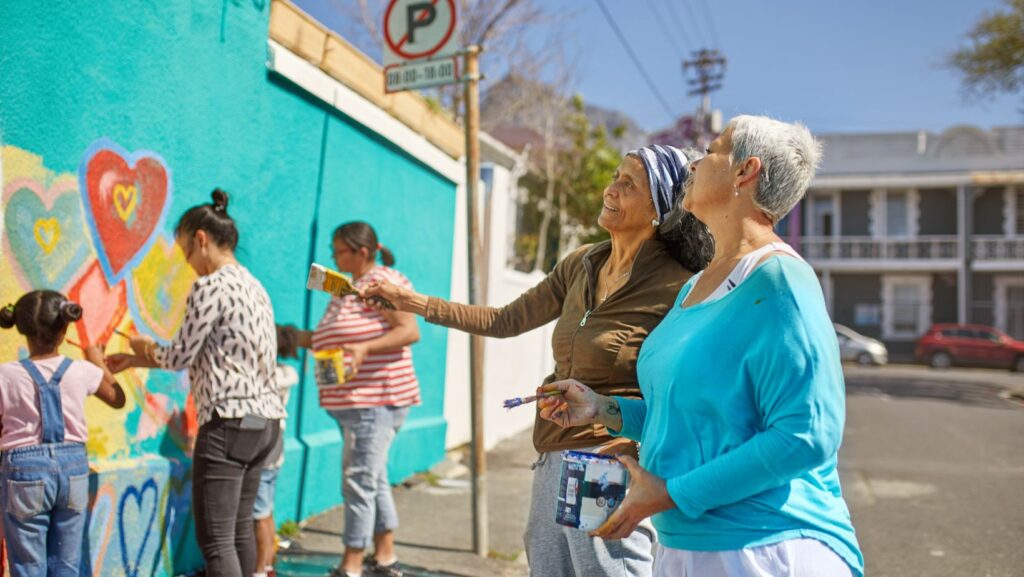In the realm of overdose prevention, the power of community cannot be overstated. A community-led approach to tackling this crisis offers a beacon of hope amidst the darkness. This guide aims to illuminate the path towards effective prevention strategies, rooted in collaboration, education, and empowerment.
By harnessing the strengths of the collective, we can navigate the complexities of overdose prevention, but there's a twist in this tale – a secret ingredient that holds the key to sustainable change. Intrigued?
Let's explore together.
Understanding the Overdose Crisis
To fully comprehend the severity of the overdose crisis, it's essential to gain a comprehensive understanding of the root causes and policy implications contributing to this devastating problem. The overdose crisis isn't just a result of individuals making poor choices; it's a complex issue deeply influenced by various social, economic, and systemic factors.
One of the root causes of the overdose crisis is the overprescribing of opioid pain medications. For years, pharmaceutical companies aggressively marketed these drugs, creating a culture of overreliance and dependence. Additionally, the lack of access to affordable alternative pain management options has also contributed to the crisis.
Another significant factor is the stigma surrounding substance use disorders. This stigma prevents individuals from seeking help and accessing life-saving resources. It's essential to address this stigma and promote a culture of compassion and understanding.
Policy implications play a crucial role in combating the overdose crisis. Implementing harm reduction strategies such as safe injection sites, naloxone distribution programs, and medication-assisted treatment can save lives. Additionally, policies that promote access to affordable and comprehensive addiction treatment services are vital.
Building Trust and Collaboration
Now let's explore the importance of building trust and collaboration in addressing the overdose crisis.
Trust building activities and collaborative decision making are crucial elements in creating effective solutions and preventing overdoses in our communities.
Building trust is the foundation of any successful collaborative effort. It involves creating an environment where individuals feel safe, respected, and valued. Trust building activities can include open and honest communication, active listening, and demonstrating reliability and consistency. By establishing trust, community members can feel more comfortable sharing their experiences, concerns, and ideas related to overdose prevention.
Collaborative decision making is a key aspect of addressing the overdose crisis. It involves involving all stakeholders, including community members, healthcare professionals, social service providers, and policymakers, in the decision-making process. By including diverse perspectives and expertise, collaborative decision making allows for more comprehensive and effective solutions.
To foster collaboration, it's important to create spaces and opportunities for community members to come together and work towards a common goal. This can include organizing community forums, workshops, or support groups where individuals can share their knowledge, experiences, and ideas. By actively involving community members in the decision-making process, they can feel empowered and take ownership of the overdose prevention efforts.
Education and Awareness Initiatives
Education and awareness initiatives play a vital role in empowering individuals and communities to prevent overdoses and promote overall well-being. By implementing effective education campaigns and prevention programs, we can equip people with the knowledge and skills necessary to recognize the signs of overdose, intervene promptly, and provide life-saving support.
Education campaigns provide valuable information to the public about the risks and consequences of drug use, as well as strategies for harm reduction. These campaigns can take various forms, such as public service announcements, social media campaigns, and community workshops. By disseminating accurate and accessible information, we can debunk myths and reduce stigma surrounding substance use disorders.
Prevention programs are another key component of education and awareness initiatives. These programs aim to educate individuals about the dangers of drug misuse, as well as equip them with coping mechanisms and life skills to resist peer pressure and make healthier choices. Prevention programs can be implemented in schools, community centers, and other settings, targeting different age groups and populations.
Access to Naloxone and Harm Reduction Strategies
By expanding access to naloxone and implementing harm reduction strategies, we can further empower individuals and communities in preventing overdoses and promoting safer practices.
Here are some important considerations for improving access to naloxone and implementing harm reduction strategies:
- Naloxone distribution: Ensuring widespread availability of naloxone is crucial in preventing overdose deaths. Communities can establish naloxone distribution programs that train individuals on how to recognize and respond to an overdose, and provide them with naloxone kits. These programs can be implemented in various settings, including healthcare facilities, outreach programs, and pharmacies.
- Safe injection sites: Safe injection sites, also known as supervised consumption sites, offer a safe and supportive environment for individuals who use drugs. These sites provide sterile equipment, overdose prevention measures, and access to healthcare professionals. By providing a space where individuals can use drugs under supervision, safe injection sites help reduce the risk of overdose and the transmission of infectious diseases.
- Harm reduction education: Educating individuals and communities about harm reduction strategies is essential in promoting safer practices. This education should focus on reducing the risks associated with drug use, such as practicing safer injection techniques, using sterile equipment, and avoiding mixing substances. It should also emphasize the importance of naloxone as a life-saving tool and provide training on how to use it effectively.
- Collaboration and partnerships: Implementing effective harm reduction strategies requires collaboration among various stakeholders, including healthcare providers, community organizations, and law enforcement. By working together, these stakeholders can develop comprehensive approaches that address the complex challenges of overdose prevention and harm reduction.
Empowering Communities for Sustainable Change

To create sustainable change, communities must come together and take proactive steps towards empowering themselves in the prevention of overdoses and the promotion of safer practices. Community engagement is key in ensuring that the efforts made have a long-term impact. By involving community members in the decision-making process and valuing their input, you can create a sense of ownership and responsibility within the community.
One way to empower communities is by providing education and training on overdose prevention and harm reduction strategies. By equipping community members with the knowledge and skills to identify and respond to overdoses, you can build a network of individuals who are ready to take action when needed. This not only saves lives in the short term but also has a lasting impact on the community's overall well-being.
In addition to education, it's important to create opportunities for community members to actively contribute to overdose prevention efforts. This can be through volunteering at local organizations, participating in community events, or joining advocacy groups. By involving individuals in meaningful ways, you foster a sense of empowerment and agency, enabling them to make a real difference in their community.








